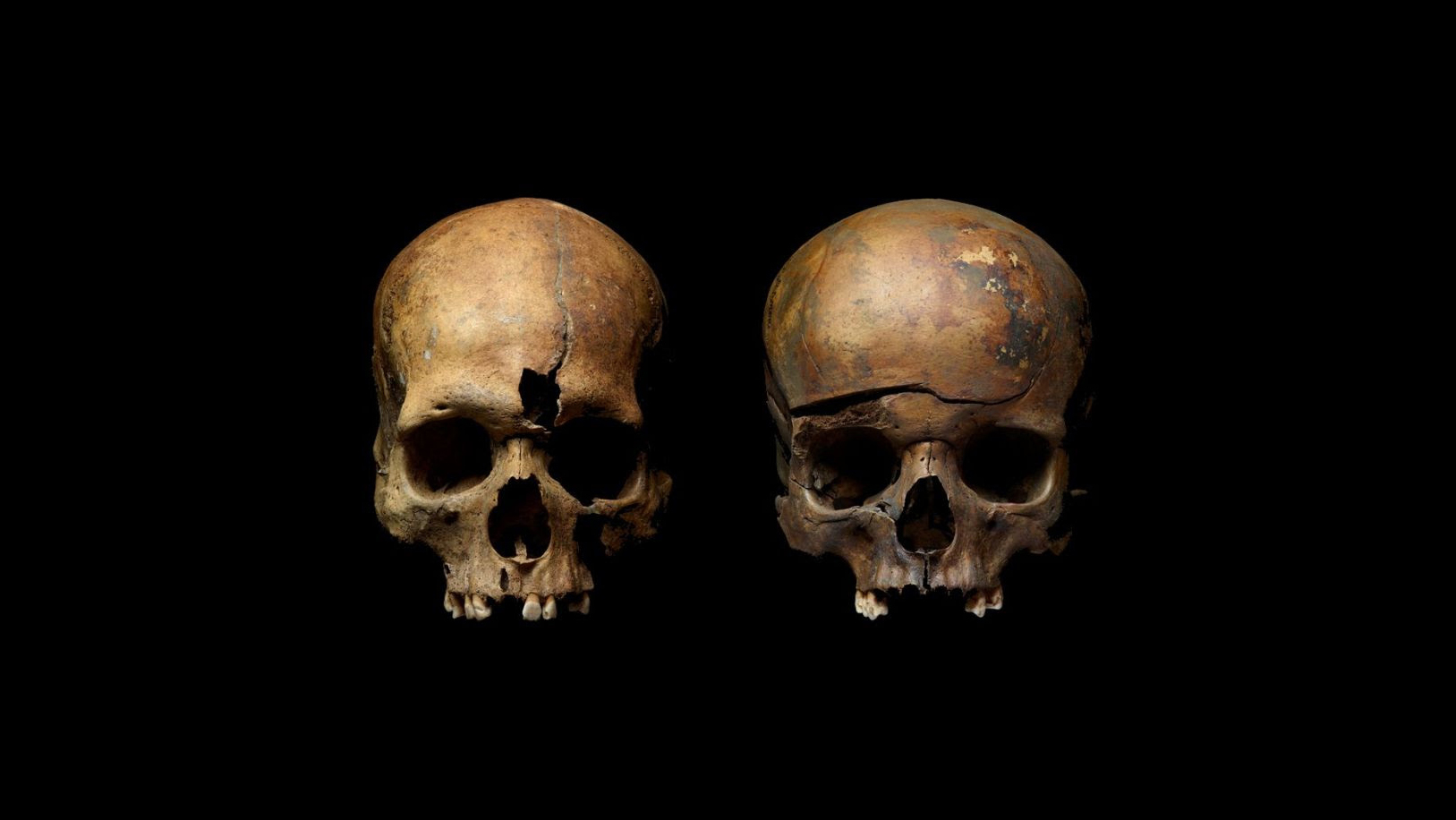13th-Century Death Pit Reveals Murdered Family in the 'City Drowned in Blood'
The group was found among hundreds of bodies consigned to mass graves.

When Mongol soldiers swept through the Russian town of Yaroslavl in 1238, a bloodbath followed. Hundreds of people died horrific and violent deaths during the city's capture, and DNA evidence has now revealed a tragic glimpse of a family of victims spanning three generations.
Following the massacre, bodies were dumped in mass graves by the dozens. No markers identified individuals, but scientists with the Moscow Institute of Physics and Technology used genetic analysis of corpses in one grave to discover that three of the dead — two women and a young man — were close relatives: a mother, her daughter and her grandson.
The matriarch of the trio was at least 55 years old, her daughter was around 30 to 40 years old and the grandson was no more than 20. The grave that held the family's bodies was one of nine death pits at Yaroslavl. Together, the pits held more than 300 corpses, the researchers reported recently at the Alekseyev Readings conference, held Aug. 26 to 28 at the Anuchin Research Institute and Museum of Anthropology in Moscow.
Related: 25 Grisly Archaeological Discoveries
Prior examination of the bones by anthropologists suggested that the trio might be related; they shared certain skull features, and all of their skeletons showed signs of spina bifida, a hereditary birth defect that produces an underdeveloped spinal cord.
The three family members were discovered in a burial pit holding 15 bodies, at a homestead inside a citadel in Yaroslavl's inner city. Though much of the site was burned during the city's capture, surviving buildings and artifacts hinted that it was once a wealthy estate, the researchers said in the presentation.
Further evidence of the murdered family's wealth was detected in their teeth. Their remains showed more advanced tooth decay than in the other townsfolk, hinting that the family's diet included regular helpings of honey and sugar — a sign of elevated status, according to the presentation.
Sign up for the Live Science daily newsletter now
Get the world’s most fascinating discoveries delivered straight to your inbox.
Genetic analysis also pinpointed a possible fourth family member, a maternal relative, buried nearby, the scientists said.
"Drowned in blood"
Excavation work at Yaroslavl from 2005 to 2006 determined that the massacre took place in February in 1238. But the species and life stages of preserved maggots (blowfly larvae) in the remains indicated that the flies laid their eggs on the corpses in warm weather. That finding suggested that the bodies were likely decomposing in the open for months before being buried.
"These people were killed, and their bodies remained lying in the snow for a fairly long time," said Asya Engovatova, head of excavations at the Yaroslavl site and deputy director of the Institute of Archaeology at the Russian Academy of Sciences.
"In April or May, flies started to multiply on the remains, and in late May or early June, they were buried in a pit on the homestead, which is where they probably had lived," Engovatova said in a statement.
The Mongol army that invaded Russia and decimated Yaroslavl in the early 13th century was led by Batu Khan, grandson of Genghis Khan and founder of the kingdom known as the "Golden Horde." Though scholars have argued that Khan's Golden Horde peacefully acquired territory in Russia, the gruesome evidence at Yaroslavl proves otherwise, the scientists said.
Signs of brutality at Yaroslavl were seen in the hundreds of hastily buried bodies, their bones punctured, broken and burned. By the time the Mongol invaders were done with Yaroslavl and the Russian town had fallen, it was truly a "city drowned in blood," the horrific fate of its residents later woven into legend, Engovatova said in the statement.
"Batu Khan's conquest was the greatest national tragedy, surpassing any other event in cruelty and destruction," Engovatova said. "It is not by chance that it is among the few such events that made its way into the Russian folklore."

Mindy Weisberger is an editor at Scholastic and a former Live Science channel editor and senior writer. She has reported on general science, covering climate change, paleontology, biology and space. Mindy studied film at Columbia University; prior to Live Science she produced, wrote and directed media for the American Museum of Natural History in New York City. Her videos about dinosaurs, astrophysics, biodiversity and evolution appear in museums and science centers worldwide, earning awards such as the CINE Golden Eagle and the Communicator Award of Excellence. Her writing has also appeared in Scientific American, The Washington Post and How It Works Magazine. Her book "Rise of the Zombie Bugs: The Surprising Science of Parasitic Mind Control" will be published in spring 2025 by Johns Hopkins University Press.










